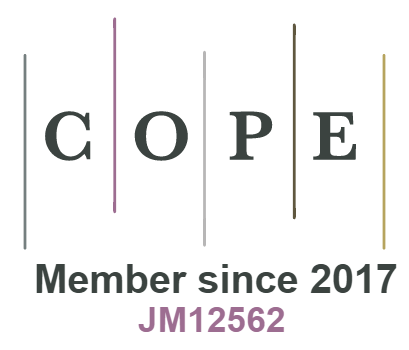Reducing Significances of Mesh Sensors Technologies through Dimensionality Reduction Algorithm
DOI:
https://doi.org/10.18034/ei.v8i2.556Keywords:
Dimensionality Reduction Algorithm, Cuckoo search, IoT, Classification accuracyAbstract
In today's world, the breadth of real-time applications and networks is not limited to business and social activities. They are expanding as a field to provide improved and competitive settings for a variety of activities such as home, health, and commercial procedures. Data analytic method is used to maintain network accessibility as well as the robustness of expert services. It is necessary to clean up the data in order to reduce the computational complexity of extracting and pre-processing models. Because present approaches are sophisticated, they necessitate large computations. To this effect, the objective is to deploy a machine learning algorithm – “cuckoo search algorithm” for dimensionality reduction problems in data extraction for IoTs application. The cuckoo search-based feature extraction algorithm is a mutant algorithm that organizes itself depending on the unpredictable amount of input and generates a new and improved feature space. After the cuckoo search-based feature extraction is implemented, a few test benchmarks are provided to assess the performance of mutant cuckoo search algorithms. As a result of the low-dimensional data, classification accuracy is improved while complexity and expense are lowered.
Downloads
References
Bhatt, C. A. and Kankanhalli, M. S. (2011). Multimedia data mining: state of the art and challenges. Multimedia Tools and Applications, 51(1), 35–76. DOI: https://doi.org/10.1007/s11042-010-0645-5
Cai, H., Xu, B., Jiang, L. and Vasilakos, A. V. (2017). IoT-Based Big Data Storage Systems in Cloud Computing: Perspectives and Challenges. IEEE Internet of Things Journal, 4(1), 75–87. DOI: https://doi.org/10.1109/JIOT.2016.2619369
Chiroma, H., Herawan, T. and Fister Jr, I. (2017). Bio-inspired computation: Recent development on the modifications of the cuckoo search algorithm. Applied Soft Computing, 61, 149–173. DOI: https://doi.org/10.1016/j.asoc.2017.07.053
Davies, N. (2010). Cuckoos, Cowbirds and Other Cheats, A&C Black.
Ding, W., Jing, X., Yan, Z. and Yang, L. T. (2019). A survey on data fusion in internet of things: towards secure and privacy preserving fusion. Information Fusion, 51, 129–144. DOI: https://doi.org/10.1016/j.inffus.2018.12.001
Ganapathy, A. (2016). Virtual Reality and Augmented Reality Driven Real Estate World to Buy Properties. Asian Journal of Humanity, Art and Literature, 3(2), 137-146. https://doi.org/10.18034/ajhal.v3i2.567 DOI: https://doi.org/10.18034/ajhal.v3i2.567
Ganapathy, A. (2018). Cascading Cache Layer in Content Management System. Asian Business Review, 8(3), 177-182. https://doi.org/10.18034/abr.v8i3.542 DOI: https://doi.org/10.18034/abr.v8i3.542
Ganapathy, A. (2019). Image Association to URLs across CMS Websites with Unique Watermark Signatures to Identify Who Owns the Camera. American Journal of Trade and Policy, 6(3), 101-106. https://doi.org/10.18034/ajtp.v6i3.543 DOI: https://doi.org/10.18034/ajtp.v6i3.543
Ganapathy, A. (2019). Mobile Remote Content Feed Editing in Content Management System. Engineering International, 7(2), 85-94. https://doi.org/10.18034/ei.v7i2.545 DOI: https://doi.org/10.18034/ei.v7i2.545
Ganapathy, A., & Neogy, T. K. (2017). Artificial Intelligence Price Emulator: A Study on Cryptocurrency. Global Disclosure of Economics and Business, 6(2), 115-122. https://doi.org/10.18034/gdeb.v6i2.558 DOI: https://doi.org/10.18034/gdeb.v6i2.558
Gandomi, A. H., Yang, X. S. and Alavi, A. H. (2013). Cuckoo search algorithm: a metaheuristic approach to solve structural optimization problems. Engineering with Computers, 29(1), 17–35. DOI: https://doi.org/10.1007/s00366-011-0241-y
Hong, D., Yokoya, N. and Zhu, X. X. (2017). Learning a robust local manifold representation for hyperspectral dimensionality reduction. IEEE Journal of Selected Topics in Applied Earth Observations and Remote Sensing, 10(6), 2960–2975. DOI: https://doi.org/10.1109/JSTARS.2017.2682189
Hong, D., Yokoya, N., Chanussot, J., Xu, J. and Zhu, X. X. (2019). Learning to propagate labels on graphs: an iterative multitask regression framework for semi-supervised hyperspectral dimensionality reduction. ISPRS Journal of Photogrammetry and Remote Sensing, 158, 35–49. DOI: https://doi.org/10.1016/j.isprsjprs.2019.09.008
Huang, L., Ding, S., Yu, S., Wang, J. and Lu, K. (2016). Chaos-enhanced cuckoo search optimization algorithms for global optimization. Applied Mathematical Modelling, 40(5–6), 3860–3875. DOI: https://doi.org/10.1016/j.apm.2015.10.052
Karkouch, A., Mousannif, H., Al Moatassime, H. and Noel, T. (2016). Data quality in internet of things: a state-of-the-art survey. Journal of Network and Computer Applications, 73, 57–81. DOI: https://doi.org/10.1016/j.jnca.2016.08.002
Keramati, A., Jafari-Marandi, R., Aliannejadi, M., Ahmadian, I., Mozaffari, M, and Abbasi, U. (2014). Improved churn prediction in telecommunication industry using data mining techniques. Applied Soft Computing, 24, 994–1012. DOI: https://doi.org/10.1016/j.asoc.2014.08.041
Kim, J. (1998). Mind in a Physical World: An Essay on the Mind-Body Problem and Mental Causation, MIT press. DOI: https://doi.org/10.7551/mitpress/4629.001.0001
Klaine, P. V., Imran, M. A., Onireti, O. and Souza, R. D. (2017). A survey of machine learning techniques applied to self-organizing cellular networks. IEEE Communication Surveys and Tutorials, 19(4), 2392–2431. DOI: https://doi.org/10.1109/COMST.2017.2727878
Liu, H. and Yu, L. (2005). Toward integrating feature selection algorithms for classification and clustering. IEEE Transactions on Knowledge and Data Engineering, 17(4), 491–502. DOI: https://doi.org/10.1109/TKDE.2005.66
Maulik, K. and Zwart, B. (2006). Tail asymptotics for exponential functionals of Lévy processes. Stochastic Processes and their Applications, 116(2), 156–177. DOI: https://doi.org/10.1016/j.spa.2005.09.002
Mladenić, D. (2005). Feature selection for dimensionality reduction, in International Statistical and Optimization Perspectives Workshop,” in Subspace, Latent Structure and Feature Selection, pp. 84–102, Berlin, Heidelberg, Springer. DOI: https://doi.org/10.1007/11752790_5
Paruchuri, H. (2015). Application of Artificial Neural Network to ANPR: An Overview. ABC Journal of Advanced Research, 4(2), 143-152. https://doi.org/10.18034/abcjar.v4i2.549 DOI: https://doi.org/10.18034/abcjar.v4i2.549
Paruchuri, H. (2018). AI Health Check Monitoring and Managing Content Up and Data in CMS World. Malaysian Journal of Medical and Biological Research, 5(2), 141-146. https://doi.org/10.18034/mjmbr.v5i2.554 DOI: https://doi.org/10.18034/mjmbr.v5i2.554
Paruchuri, H. (2019). Market Segmentation, Targeting, and Positioning Using Machine Learning. Asian Journal of Applied Science and Engineering, 8(1), 7-14.
Paruchuri, H., & Asadullah, A. (2018). The Effect of Emotional Intelligence on the Diversity Climate and Innovation Capabilities. Asia Pacific Journal of Energy and Environment, 5(2), 91-96. https://doi.org/10.18034/apjee.v5i2.561 DOI: https://doi.org/10.18034/apjee.v5i2.561
Patel, K. K. and Patel, S. M. (2016). Internet of things-IOT: definition, characteristics, architecture, enabling technologies, application & future challenges. International Journal of Engineering in Computer Science, 6(5), 1-20.
Payne, R. B. (1977). The Ecology of Brood Parasitism in Birds. Annual Review of Ecology and Systematics, 8(1), 1–28. DOI: https://doi.org/10.1146/annurev.es.08.110177.000245
Pittner, S. and Kamarthi, S. V. (1999). Feature extraction from wavelet coefficients for pattern recognition tasks. IEEE Transactions on Pattern Analysis and Machine Intelligence, 21(1), 83–88. DOI: https://doi.org/10.1109/34.745739
Ramadan, R. M. and Abdel-Kader, R. F. (2009). Face recognition using particle swarm optimization-based selected features. International Journal of Signal Processing, Image Processing and Pattern Recognition, 2(2), 51–65.
Ramirez-Gallego, S., Krawczyk, B., García, S., Woźniak, M. and Herrera, F. (2017). A survey on data preprocessing for data stream mining: current status and future directions. Neurocomputing, 239, 39–57. DOI: https://doi.org/10.1016/j.neucom.2017.01.078
Ristoski, P. and Paulheim, H. (2016). Semantic Web in data mining and knowledge discovery: A comprehensive survey. Journal of Web Semantics, 36, 1–22. DOI: https://doi.org/10.1016/j.websem.2016.01.001
Tsai, C. W., Lai, C. F., Chao, H. C. and Vasilakos, A. V. (2015). Big data analytics: a survey. Journal of Big Data, 2(1), 1-15. DOI: https://doi.org/10.1186/s40537-015-0030-3
Vadlamudi, S. (2016). What Impact does Internet of Things have on Project Management in Project based Firms?. Asian Business Review, 6(3), 179-186. https://doi.org/10.18034/abr.v6i3.520 DOI: https://doi.org/10.18034/abr.v6i3.520
Vadlamudi, S. (2019). How Artificial Intelligence Improves Agricultural Productivity and Sustainability: A Global Thematic Analysis. Asia Pacific Journal of Energy and Environment, 6(2), 91-100. https://doi.org/10.18034/apjee.v6i2.542 DOI: https://doi.org/10.18034/apjee.v6i2.542
Yang, X. Y. and Dan, W. U. (2009). Atomic simulations for surface-initiated melting of Nb(111). Transactions of the Nonferrous Metals Society of China, 19(1), 210– 214. DOI: https://doi.org/10.1016/S1003-6326(08)60254-X
Yeh, J. Y., Wu, T. H. and Tsao, C. W. (2011). Using data mining techniques to predict hospitalization of hemodialysis patients. Decision Support Systems, 50(2), 439–448. DOI: https://doi.org/10.1016/j.dss.2010.11.001
Yoo, Y. (2010). Computing in Everyday Life: A Call for Research on Experiential Computing. MIS Quarterly, 34(2), 213–231. DOI: https://doi.org/10.2307/20721425
--0--
Downloads
Published
Issue
Section
License
Engineering International is an Open Access journal. Authors who publish with this journal agree to the following terms:
- Authors retain copyright and grant the journal the right of first publication with the work simultaneously licensed under a CC BY-NC 4.0 International License that allows others to share the work with an acknowledgment of the work's authorship and initial publication in this journal.
- Authors are able to enter into separate, additional contractual arrangements for the non-exclusive distribution of the journal's published version of their work (e.g., post it to an institutional repository or publish it in a book), with an acknowledgment of its initial publication in this journal. We require authors to inform us of any instances of re-publication.









